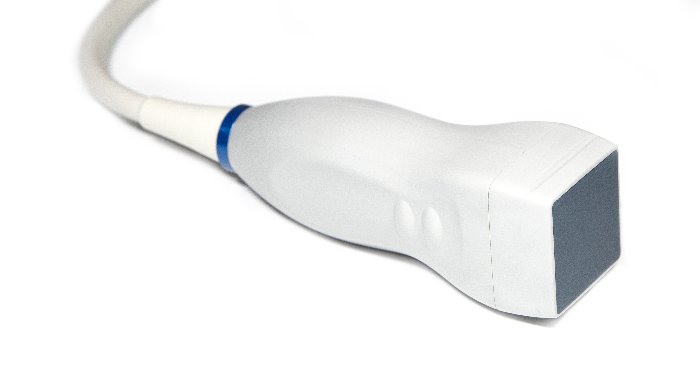Welcome to the fifth issue of Volume 5 of PLANE WAVE, Verasonics’ Newsletter through which we share information about new products and technologies, emerging applications, conferences, training opportunities, and collaborations with researchers in ultrasound and ultrasonic technologies. We hope you find these newsletters informative and interesting, and welcome your suggestions for future topics.
New Products & Technologies ▪ Emerging Applications ▪ Conferences & Training Opportunities ▪ Collaborations with Researchers
In case you missed visiting our virtual exhibit during the IEEE IUS 2021, we are pleased to offer a review of new products introduced by Verasonics in this issue of Plane Wave. Our team proudly presented the newest advances in research ultrasound, and, in addition, we presented several scientific presentations during the conference.
Latest Advances in Research Ultrasound
Its not too late to visit the virtual exhibit Verasonics presented at IEEE IUS 2021 and learn about Verasonics’ new technologies, and products and features. Visit here.
Verasonics Advances in Research Ultrasound include:
Volume Imaging
Verasonics offers the most versatile, comprehensive, and well-supported Volume Imaging Solutions available today for researchers. The newest offering from Verasonics is a 512-channel solution using two Vantage™ 256 systems synchronized for phase-accurate data acquisition. Verasonics 2-system Volume Imaging Package includes 512 transmit and receive channels, synchronized with the Verasonics synchronization module, a license for 2-system RDMA data transfer, example scripts for volume acquisition with matrix arrays, and is available with LINUX-based host controllers. It is compatible with the UTA 1024-MUX or the UTA 256 Direct adapters.
- Row-Column Array Transducer: Verasonics’ newest volume imaging technology is a 6 MHz Row-Column Array (RCA) Transducer made by Vermon. It features orthogonally oriented arrays of 128 elements each, with a 0.2mm pitch and 100% bandwidth. Verasonics provides example scripts for imaging and simulation support for RCA transducers with the Vantage 256 Research Ultrasound system. This RCA transducer may provide a cost-effective approach to volume imaging that eliminates the high channel count requirement of matrix arrays.

RC6gV Row Column Array Transducer
Scientific Research Presented:
Random Aperture Optimization for SRAC in High Frame Rate Volume Imaging (Authors: Miguel Bernal, Daniel Rohrbach, Ron Daigle)
High frame-rate volume imaging (HFVI) has become a useful technique for many areas of research in the last decade. Unfortunately, HFVI usually requires ultrasound systems with a large channel count. Sparse Random Aperture Compounding (SRAC) is a technique that uses random apertures to reduce the number of channels necessary. This approach compounds images from complementary random apertures to balance image quality and frame rate. In the current work we used a Monte Carlo method to optimize random apertures to improve image quality without sacrificing temporal resolution. The research team also evaluated if complementarity of random apertures plays a significant role in the image quality. While previous studies have demonstrated the advantage of using SRAC for HFVI, this work revealed the importance of aperture optimization and complementarity as well as the significance of selecting the proper apertures for a given application.
Towards 3D Passive Shear Elasticity Imaging Using Row-columns Arrays (Authors: Miguel Bernal, Nicolás Benech, Ron Daigle, Javier Brum)
Research developed in partnership with Laboratorio de Acústica Ultrasonora, Instituto de Física, Facultad de Ciencias, Universidad de la República, Montevideo, Uruguay
The stiffening of soft tissues has been demonstrated to be associated with different disease processes such as cancer. In the last decades several devices and techniques have been developed to provide 2D maps of elasticity in order to help in diagnosis. 3D shear elasticity imaging was recently implemented with matrix arrays using the acoustic radiation force of ultrasound as shear wave source. However, matrix arrays require large number of channels and data to be processed. Row Column Arrays (RCAs) are a cheaper alternative to volume imaging since they require lower number of channels. However, at present RCAs are unable to generate acoustic radiation force due to their design and manufacturing process. To overcome the need of acoustic radiation force for elasticity imaging, in this work we implemented a passive elastography approach based on noise correlation of a complex elastic wave field to conduct 3D shear elasticity imaging using RCAs. Experiments were conducted on a tissue mimicking phantom demonstrate the feasibility of this approach.
Nondestructive State-of-charge Assessment of Lithium-ion batteries Using Quantitative Ultrasound Spectroscopy (Authors: Daniel Rohrbach, Esteban Garcia-Tamayo, Jack Potter, Vladimir Martinez, Miguel Bernal)
Research developed in partnership with the Departments of Nanotechnology Engineering and Mechanical Engineering, UPB, Medellin, Columbia
The ability to detect and quantify the state of charge (SoC) of lithium-ion (Li-ion) batteries – the most common energy sources for portable devices – using fast and nondestructive evaluation techniques is crucial for the technology. The results from this study demonstrate feasibility and promising results of using linear-array ultrasound transducers in combination with Quantitative Ultrasound Spectroscopy (QUS) parameters for future nondestructive evaluation of SoC of Li-ion batteries.

